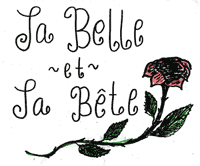Modes of Communication
Example
1
| 2 | 3 | 4
Examples of integrated performance assessment units can be used or adapted to fit your classroom.
Level: Novice High - Intermediate Low

THEME: Fables and Fairy Tales
ESSENTIAL QUESTION: Why are Stories Important?
Context: Students have been learning about and reading fables, fairy tales and children’s stories from the target culture. Students have also learned and practiced structures and relevant vocabulary that they need for describing and talking about the stories.
Students read a legend from the target culture in class.
Interpretive Task:
Read the legend and then complete a worksheet where students identify the main character, the main point of the story, and one or two supporting details by underlining, or numbering the appropriate words. Students could also be asked to respond to questions by writing short answers. After checking the worksheets for understanding, any misunderstandings about the legend are discussed with the class.
Culture and Comparisons:
In class, students are
asked to think about the legend or story they read in the target
language and the stories and legends they are familiar with from
their language.
- What are the similarities and differences in the stories?
- How are the main characters portrayed in each culture?
- What is the message individual stories/legends convey?
- What do the stories tell about the way the target culture sees the world?
- What seems important about each of the stories?
These questions can be the start for a rich discussion about cultural perspectives and comparisons as they relate to conveying social values, materialism, altruism, values in child rearing, social classes, etc. and provide a connection to other subject areas such as history, social studies, and sociology. This discussion could be in English, to allow students to express ideas for which they may not have the target language.
(There is a general note of caution about limited use of English/native language so that students do not rely on English/native language for discussion).
Teachers can also use scaffolded questions to help students express their responses to the questions.
For an assignment, students think of their favorite story, legend or fairy tale and write notes about it in the target language. The notes will be used in class for the interpersonal task.
Students should answer the following questions:
- What is the story?
- When did they first hear it and from whom?
- Why is it a favorite story?
- What is the moral or main idea in the story?
- Who do they think would like it?
Interpersonal Task:
In groups of four, students will tell about their favorite stories and answer questions. This task is interpersonal because the discussion is unrehearsed. The questions students answered the previous night, gave them an opportunity to reflect on their favorite story. Making notes provided students with some “thinking time” to be better prepared to participate in the conversation.
Using a checklist, the teacher could move among the groups to rate the discussions in each group, or, the teacher cold also choose to pull several pairs of students aside and discuss their story with them in detail.
Students can be evaluated using inner and outer circles, where students in the outer circle are assigned a student in the inner circle, directly across from him or her, to observe. Roles and places are reversed after the inner group completes the task assigned by the teacher. The second group of students discusses an assigned task. Assigning roles to the students, allows the teacher to listen and rate the discussion. Groups may also be videotaped for the teacher to view later. (A detailed explanation of inner/outer circles can be downloaded from Tips for Teachers on the Resources page.)
In assessing the students during the interpersonal task, a teacher could have students fill out a self-assessment checklist or rubric for their participation in the discussion.
Presentational Task:
Draw a sequence of five pictures depicting the main events of a legend or story. Provide a heading and dialogue for each frame.
The text for the sequences will be edited and revised for accuracy. The editing may be first done as pair work with each partner being responsible for making corrections and allowing the teacher to give the final feedback before the students complete their final portrayal of a legend or fairy tale. Samples of student work and a rubric can be seen under Fables through Comics (French).
This task is presentational because the students are writing formal texts for an audience. Students write a rough draft for their sequences. After completing a draft, students receive feedback from the teacher and peers, make the necessary changes and then prepare a final draft.
Peer feedback:
Peer editing works well, when students
are responsible for one or two specific points in their editing
task; for example, they could verify that the contents of the two
paragraphs matched the instructions, or a student could check for
subject verb agreement, correct genders (if applicable), or that no words were left
in English.
Give peers a short checklist (two or three items) to use in providing feedback. They can complete the checklist, write their comments, and sign their name to the checklist indicating that they have given appropriate feedback.
Teacher feedback:
Teachers should remember that s/he is not writing the comic for the student. Before accepting a rough draft, give the students a list of non-negotiables. Rough drafts should not be accepted unless the non-negotiables have been met.
Examples of non-negotiables for this task might be:
- grammar has been checked
- each section has a heading and a dialogue
The interpersonal and presentational tasks can be evaluated using a rubric (see the Evaluation section for information on constructing rubrics), while the interpretive task is evaluated based on responses on the students’ worksheets.
See more examples of complete standards-based integrated performance assessment units.
